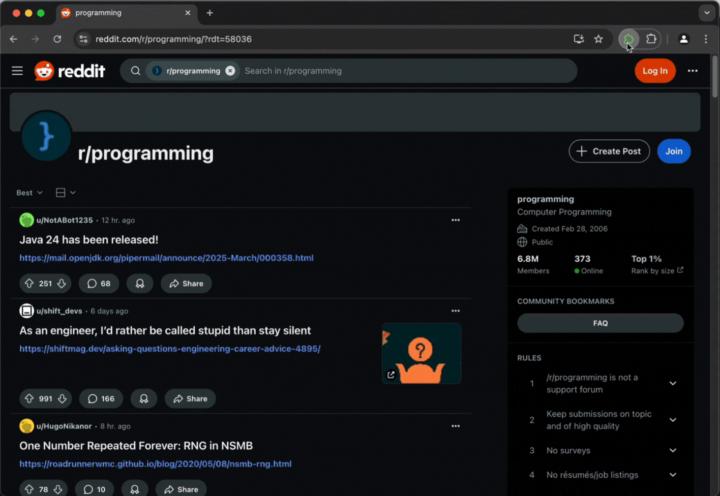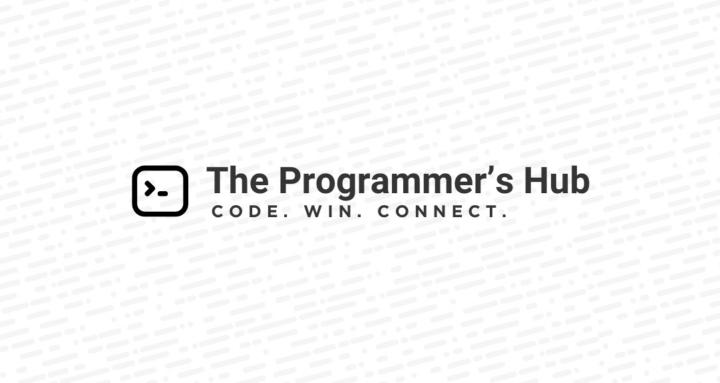
Write something
The Chrome API nobody's talking about (but everyone should be using)
So I stumbled onto something pretty awesome recently. We were fixing our sad excuse for a Chrome extension (seriously, it was a mess) when I discovered this Chrome API that's been hiding in plain sight for two years. Our old extension was a total nightmare. Some freelancer cobbled it together as a proof of concept, and let's just say maintaining it wasn't exactly my idea of fun. When we finally decided to rebuild it from scratch, we got talking about cool ways to make it better. That's when I found this thing called the sidePanel API that somehow flew under my radar. And maybe I was living under a rock somehow? It basically lets you stick a mini app in a drawer on the right side of your browser. And it's actually pretty sweet: - It sticks around when you hop between tabs or click around on a page - It's about 300px wide (phone-sized) but users can stretch it wider if they want (no way to control this with code yet... sad face) - It feels like it belongs there - not like some weird add-on Why You Should Care - It's like having a little buddy that hangs out with your browser (no extra windows to manage) - There's HUGE potential for workflow tools - think note-taking apps, CRMs, page analyzers, all that good stuff - It's super easy to work with. Sure, there are a couple annoying quirks, but nothing major If you're into building browser extensions, you've gotta check this out. Seriously, I'm surprised more people aren't using it yet!
0
0

Welcome - The Vision 🚀
[IMPORTANT READ] A massive thank you to everyone who’s already joined The Programmer’s Hub! 🎉 Our mission is simple... Build a vibrant, supportive tribe where coders thrive—no toxicity, no gatekeeping, just pure passion for code. Here’s how we’ll make history together: 🔥 Our First Big Focus as a Tribe 1. 🚀 Hit 250 Members & Launch Our First Community T-Shirt! Every new member brings us closer to unlocking this milestone. 2. 💪 Cultivate a "No Jerks Allowed" Culture. Tired of snarky forums? Us too. 3. ✨ Spotlight Member Projects in the Hall of Fame. Your work deserves applause. What’s In It For You? - Swag, Glory, & Growth: Earn rewards for engaging, not just expertise. - A Squad That Cares: No lone wolves here—just devs who want you to succeed. - Your Code, Your Legacy: Turn side projects into resume gold (or startup ideas!). FEW THINGS TO NOTE: 1. All Skill Levels Welcome! Newbie or ninja, your voice matters here. 2. INTRODUCE YOURSELF BELOW! 3. READY TO LEVEL UP? 👉 Join the 250 Members Challenge by sharing this link with your friends: skool.com/programming/about Let’s build this tribe right—no egos, all energy. 🚀 - Skyler
Kickstart Your Next Side Project
Side projects offer a creative outlet and an opportunity to expand your skills outside your main work. For many developers, diving into programming games or open source challenges is both an exciting hobby and a means to build a stronger portfolio. Here are some ideas and tips to help you kickstart your next side project. Explore Programming Games Programming games are interactive and engaging ways to solve puzzles or simulate real-world scenarios. These games range from simple code challenges on platforms like Codewars to more complex simulations available on GitHub. They not only test your skills but also provide a fun break from routine work. Get Involved in Open Source Projects Open source contributions are invaluable. By participating in open source projects, you can learn new technologies, work with diverse teams, and gain practical experience. Whether you’re fixing bugs, adding new features, or improving documentation, every contribution enhances your coding abilities. Choosing a Project Your side project doesn’t need to be monumental. It could be a tool to automate a personal workflow, a small game that entertains, or a library that simplifies a repetitive task. Focus on projects that interest you and have a manageable scope. This approach not only keeps the work fun but also allows you to see progress quickly. Plan and Collaborate Start by jotting down your ideas and defining clear objectives. A simple plan outlining the project’s goals, key features, and a timeline can provide direction. If you have friends or colleagues with similar interests, consider collaborating. Working together can lead to richer ideas and faster progress. Learning and Experimentation Side projects are a fantastic way to learn. Experiment with new languages, frameworks, or tools that you haven’t had the chance to explore at work. Embrace the process of trial and error—each mistake is a learning opportunity that hones your skills. The Value of Side Projects Aside from skill development, side projects often result in tangible work that can impress future employers or clients. They demonstrate initiative, passion, and the ability to work on diverse challenges. Plus, the creative freedom of a side project can be incredibly refreshing and motivating.
1
0

JavaScript Is So Weird: Hilarious Quirks That Will Make You Laugh
Have you ever felt like JavaScript was written by someone who was on a wild caffeine binge? This language is full of bizarre behaviors that are downright outrageous. Let’s dive into some of these quirks and have a laugh while we learn how to live with this crazy code. 1. Type Coercion Madness Imagine adding two empty arrays like this: [] + []. Instead of getting another array, JavaScript magically turns it into an empty string! And when you try [] + {}, it transforms into the string "[object Object]"—as if the language is saying, “Surprise! I’m not what you think!” This kind of type juggling can leave you scratching your head, wondering if your computer is playing pranks on you. 2. The Hoisting Houdini Ever call a variable before you’ve declared it? In JavaScript, that’s totally allowed thanks to hoisting. It’s like the variable is pulled from a magic hat and appears out of nowhere, only to be undefined until it gets its real value. Picture a magician announcing “Ta-da!” without a prop—it’s both impressive and confounding. Just remember to declare your variables at the top to avoid these disappearing acts. 3. Closure: The Secret Stash Closures are like having a secret stash that never disappears—even after the outer function has finished running. It’s as if your function keeps a little hidden pocket for precious data. While this trick can be incredibly handy for keeping variables private, it sometimes feels like your code is hoarding snacks it doesn’t need, which might even lead to memory issues if you’re not careful. 4. NaN: The Ultimate Contrarian NaN stands for “Not a Number,” but here’s the kicker: NaN isn’t equal to anything—not even itself! If you compare NaN with NaN, it stubbornly refuses to match. It’s like having a friend who always says, “Nope, not even me!” when you ask if they’re your best buddy. To check for NaN, you must use special functions like Number.isNaN(). JavaScript’s quirks might seem outrageous at first, but they’re part of what makes this language so entertaining (and challenging!). Instead of getting frustrated by its absurd behavior, learn to appreciate the unique style of JavaScript. Embrace the weirdness and enjoy the journey—after all, every bug is just another chance to discover something new.
0
0

10 Proven Ways to Connect with Fellow Developers and Build Your Network
Networking is an essential part of any developer’s journey. Establishing genuine connections not only provides support when facing technical challenges but also opens doors to new ideas and collaborations. Here are ten effective strategies that can help developers broaden their professional network: 1. Participate in Online Forums and Communities Join platforms such as Reddit, DEV Community, or specialized forums where technical discussions flourish. These spaces allow you to exchange ideas, seek advice, and share experiences with peers from different backgrounds. 2. Attend Virtual Meetups and Conferences With many events moving online, virtual meetups and webinars have become excellent opportunities to connect. Participating in live Q&A sessions and panel discussions enables you to interact with experts and other developers. 3. Contribute to Open Source Projects Getting involved with open source projects is a practical way to collaborate and learn. Contributing code, documentation, or even testing helps you gain recognition while working alongside other passionate developers. 4. Share Your Knowledge Write technical blog posts, create tutorials, or record video explanations. Sharing your learning process not only reinforces your own understanding but also attracts like-minded individuals interested in similar topics. 5. Leverage Social Media Platforms Follow influential developers on Twitter and LinkedIn, and participate in discussions by commenting on posts and sharing your insights. Social media can be a great venue for building professional relationships. 6. Join Developer Groups and Meetups Explore local and global developer groups through sites like meetup.com. Face-to-face (or video) interactions can forge stronger relationships and foster ongoing collaborations. 7. Engage in Collaborative Projects Team up on side projects or hackathons. Collaborative efforts can spark creativity and provide a deeper understanding of diverse problem-solving approaches.
0
0

1-8 of 8

skool.com/coding-nation-5468
Win swag, crush games, and grow in a judgment-free zone. All programmers welcome. 🚀
Powered by

